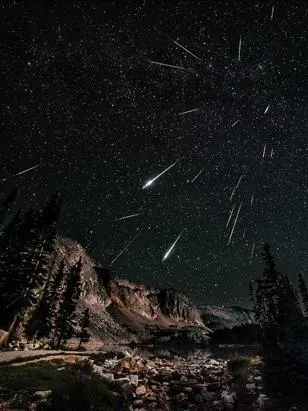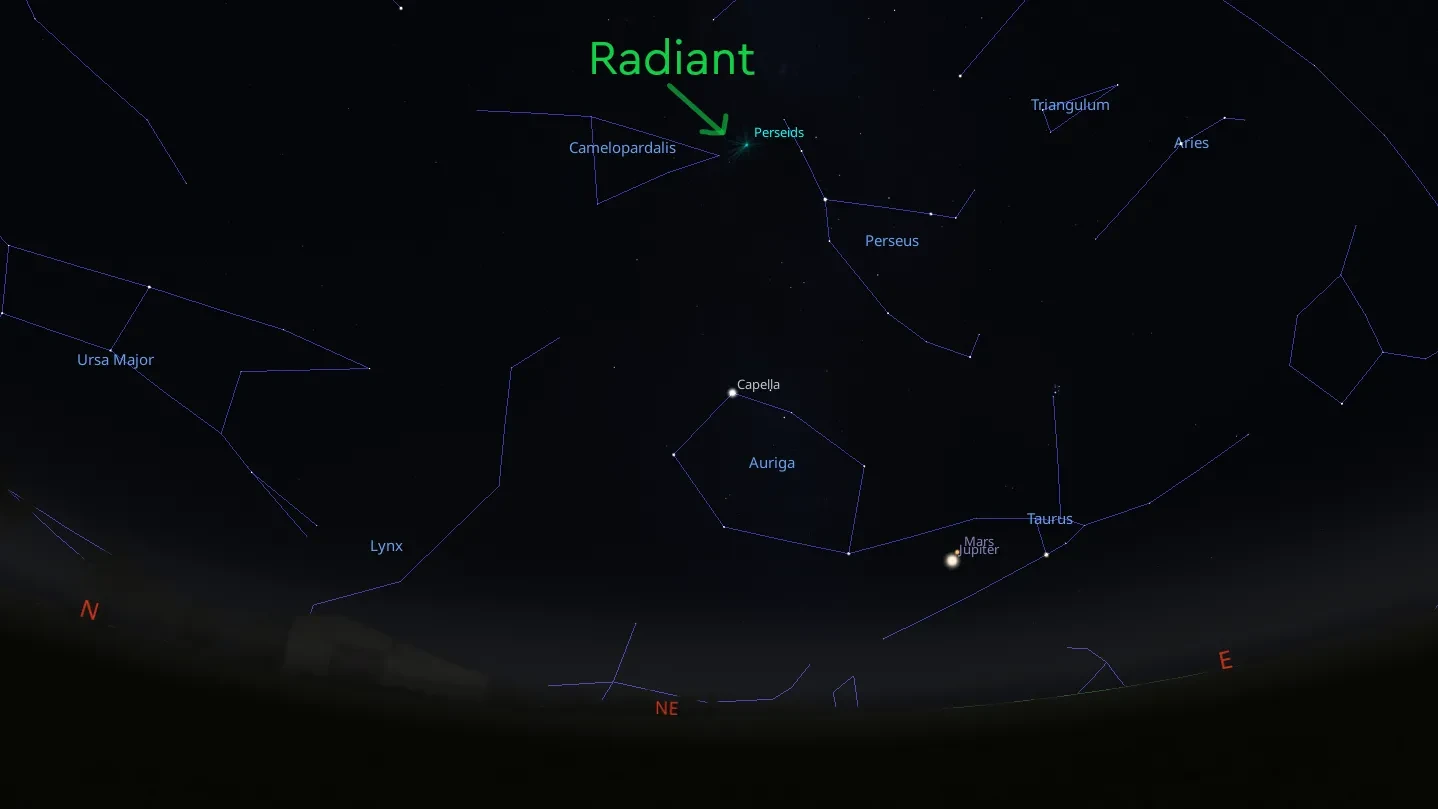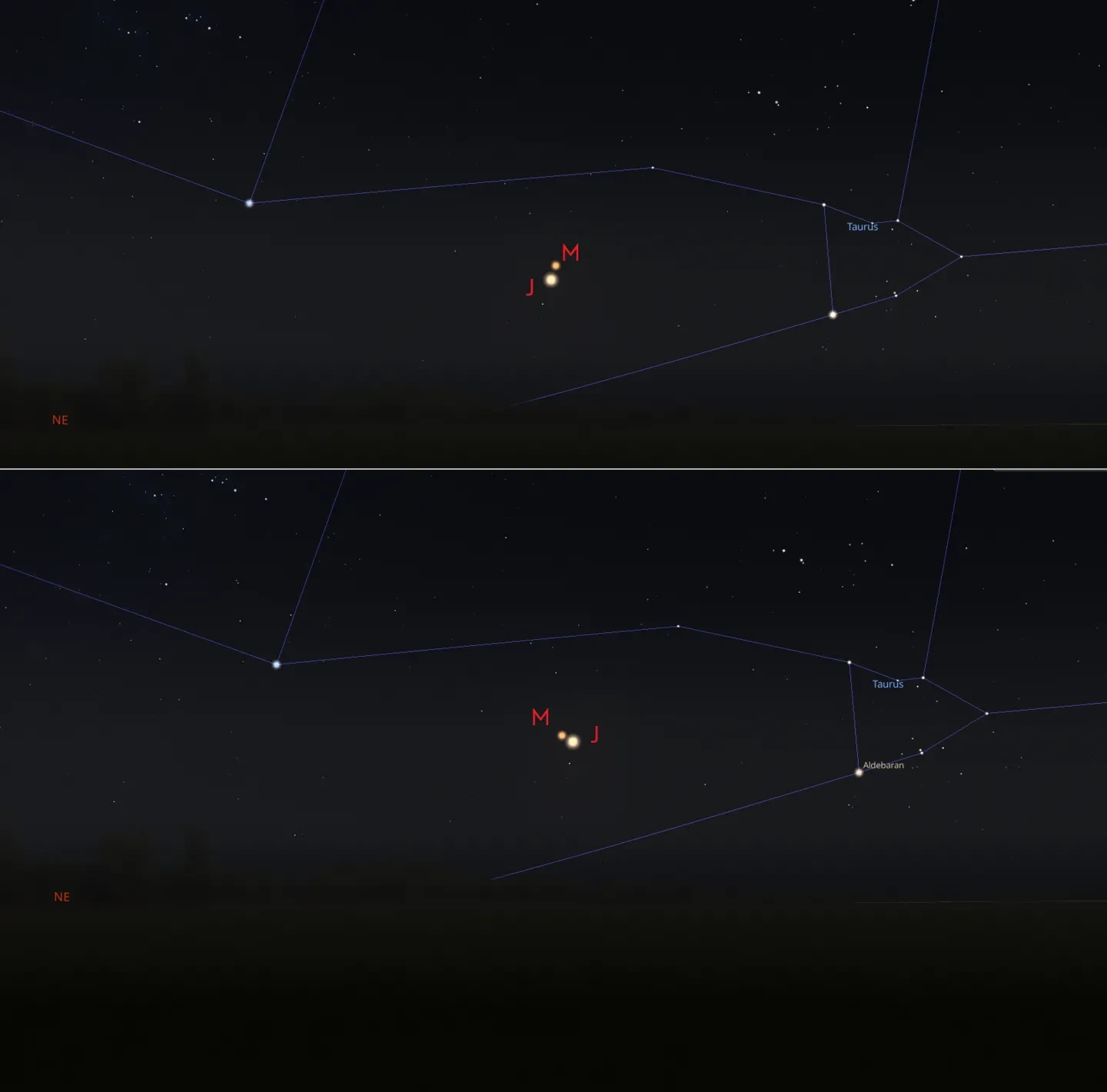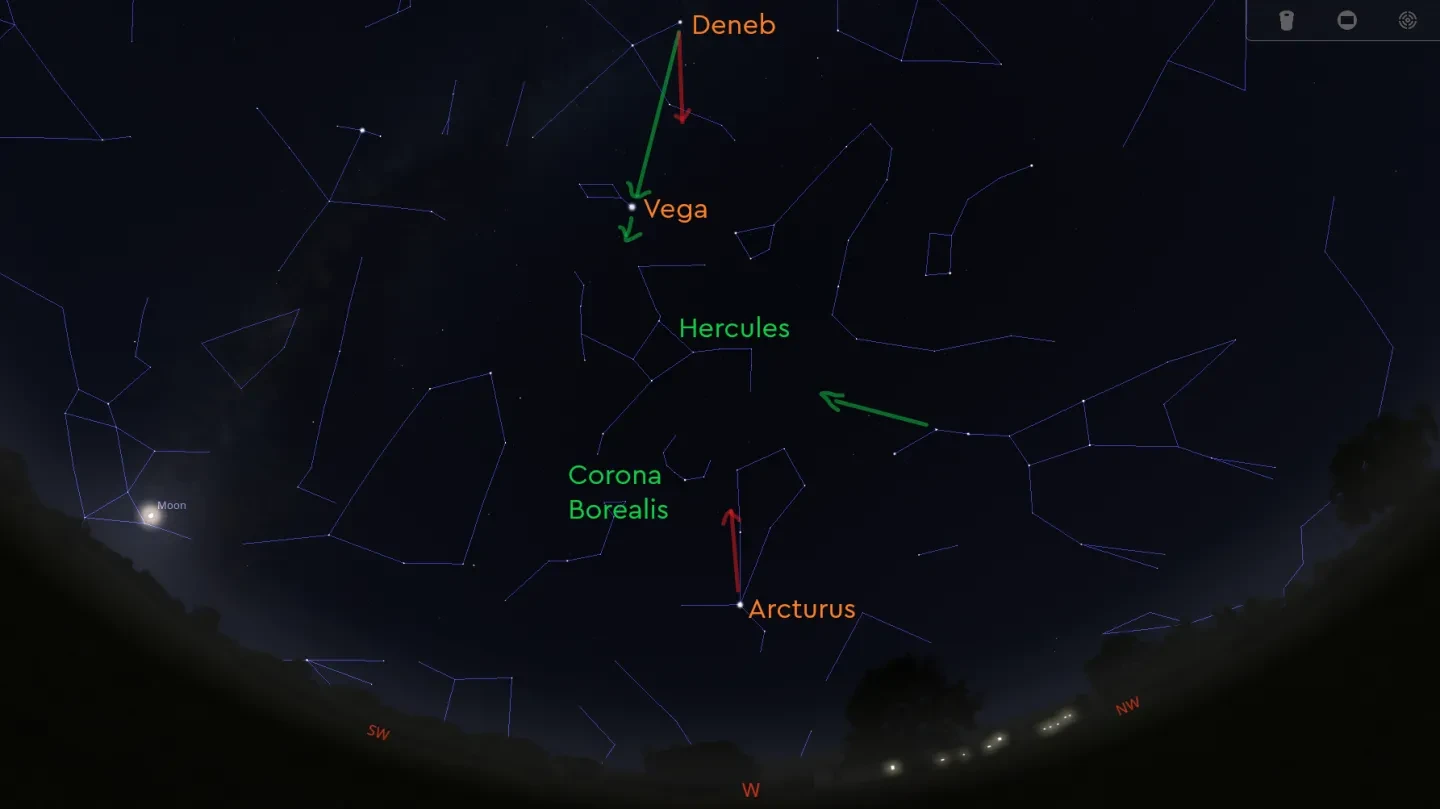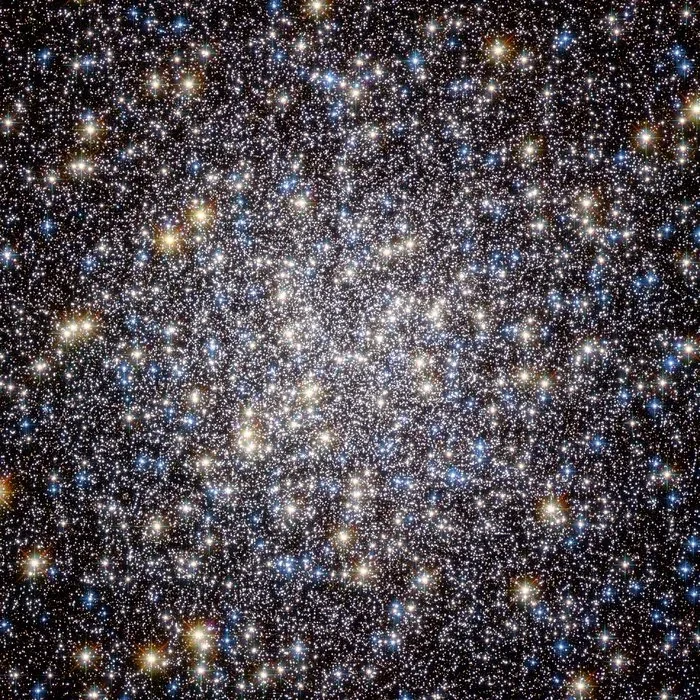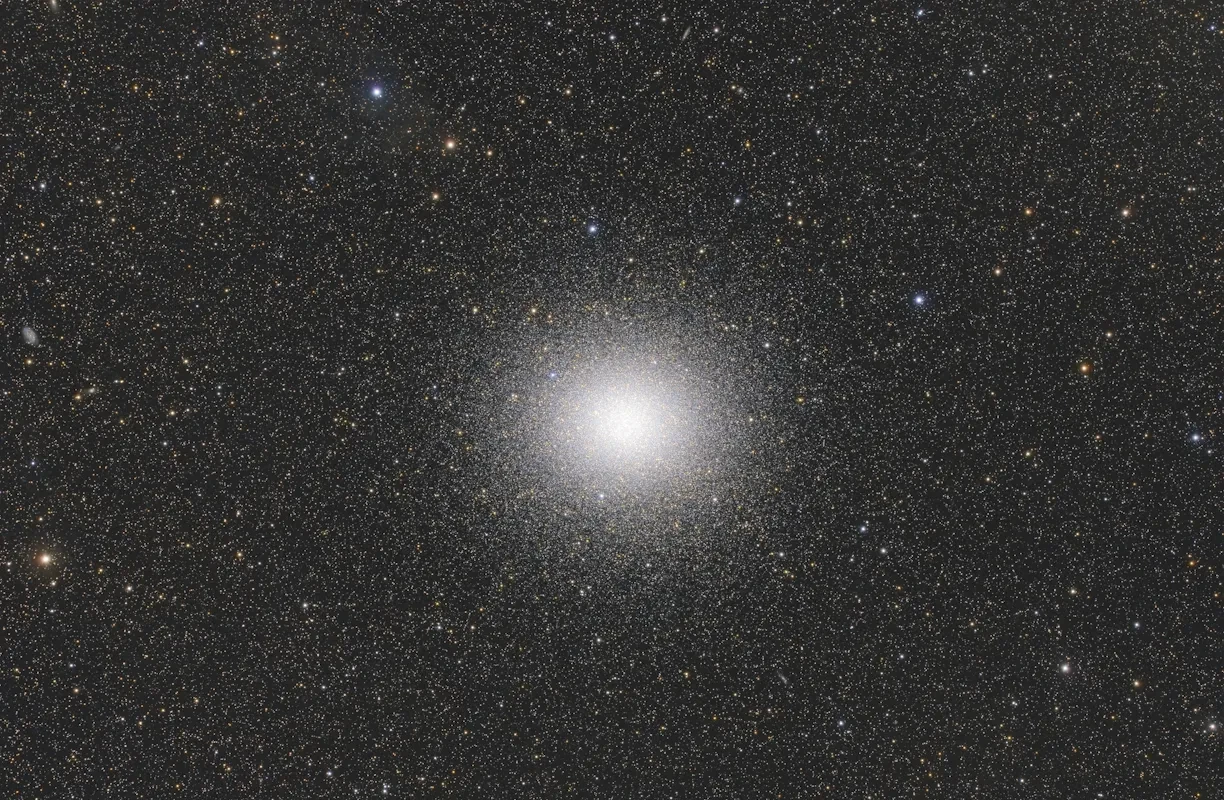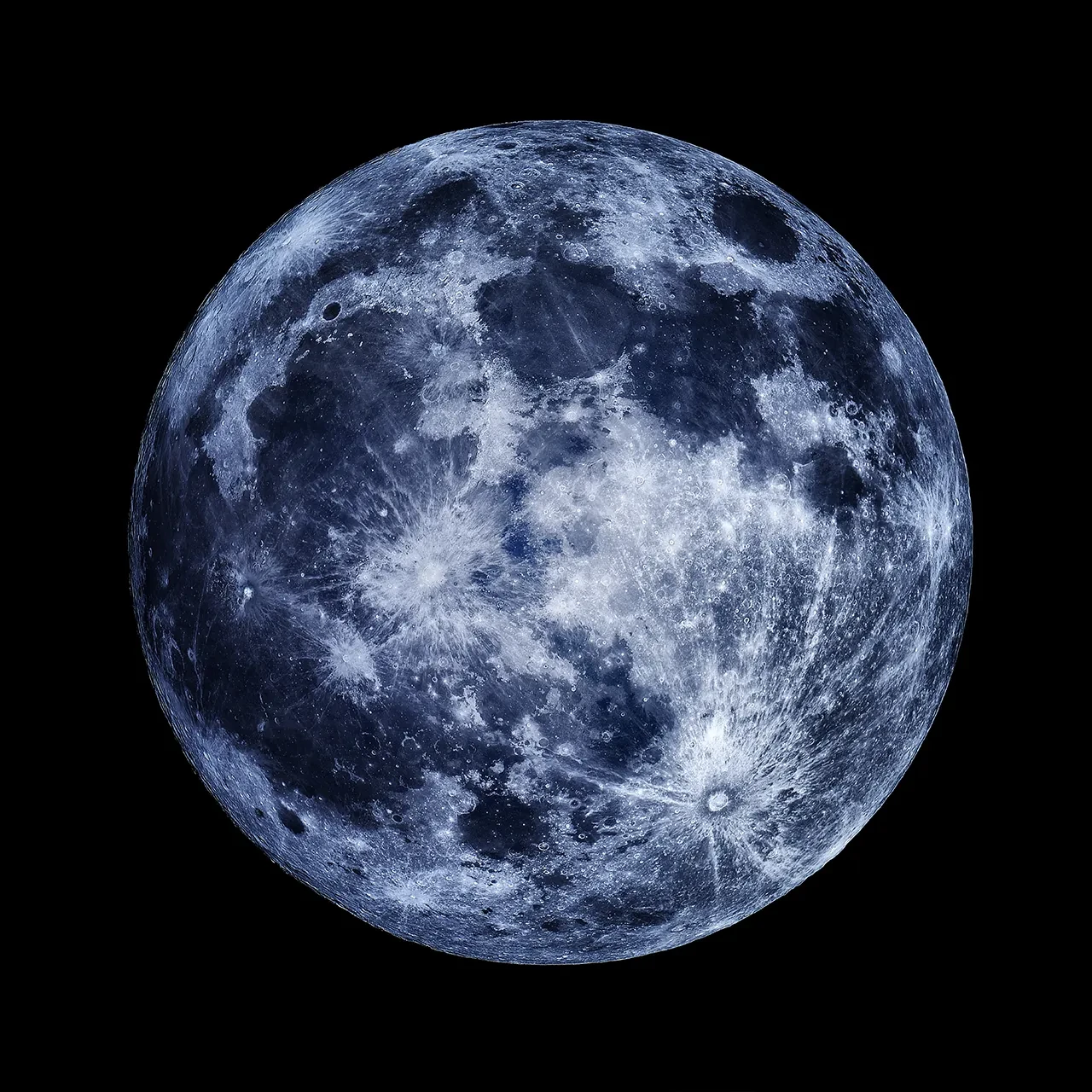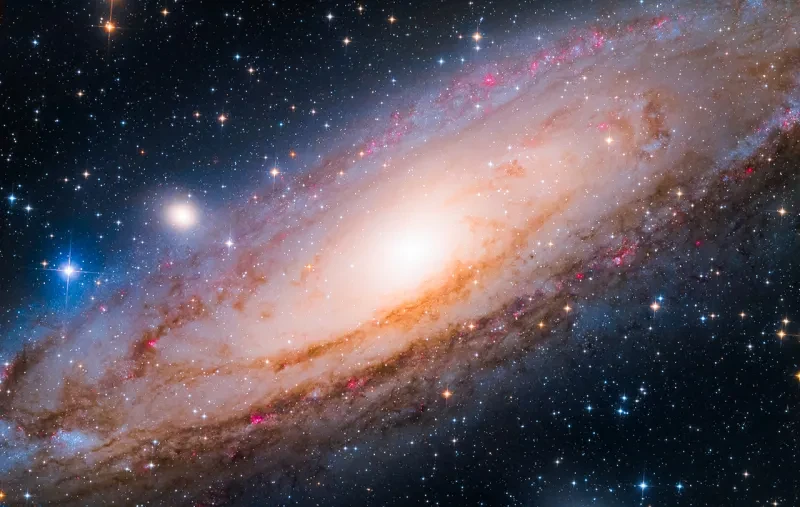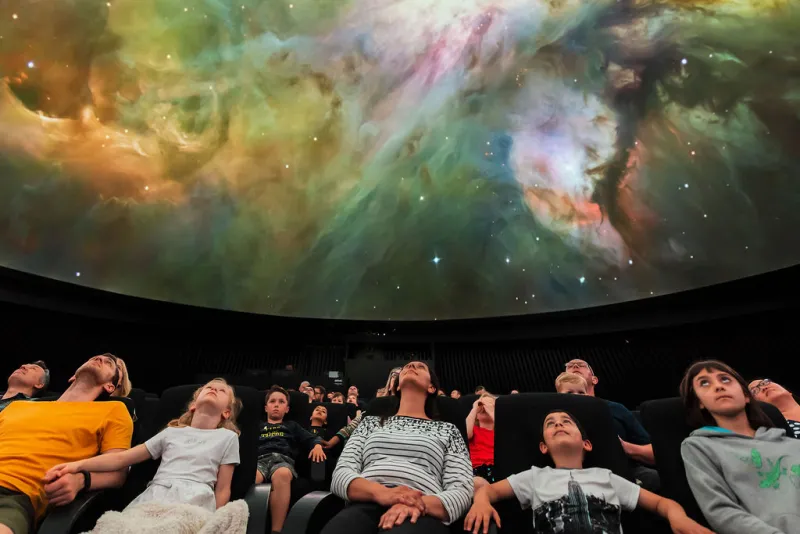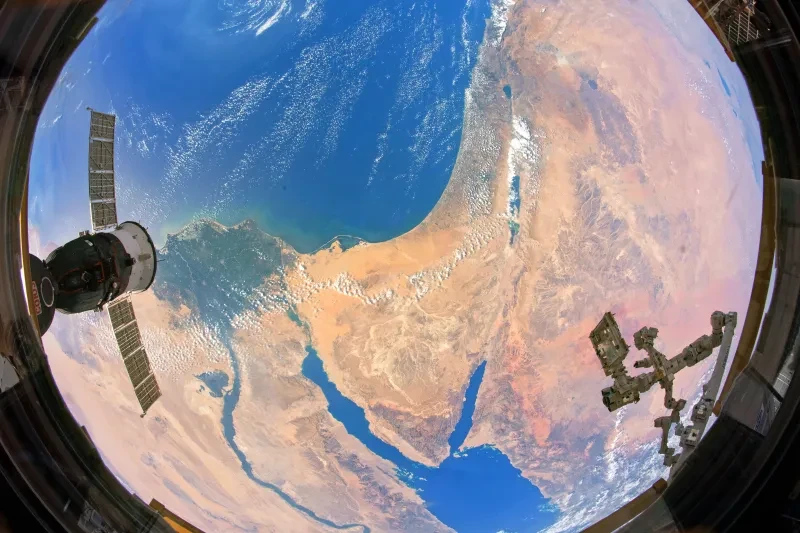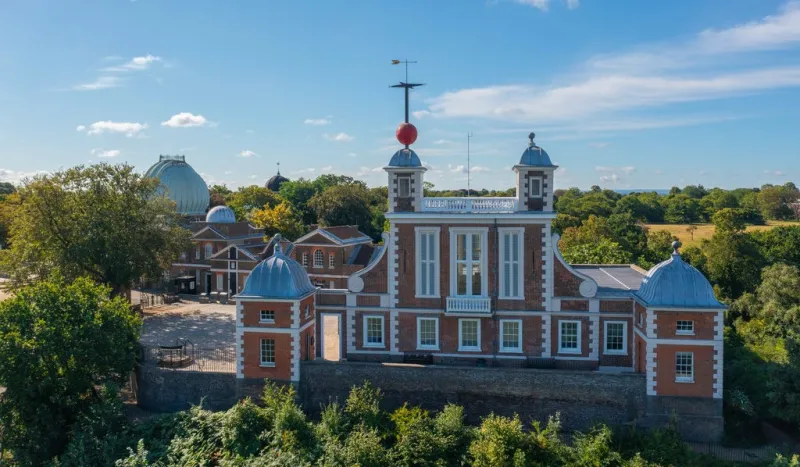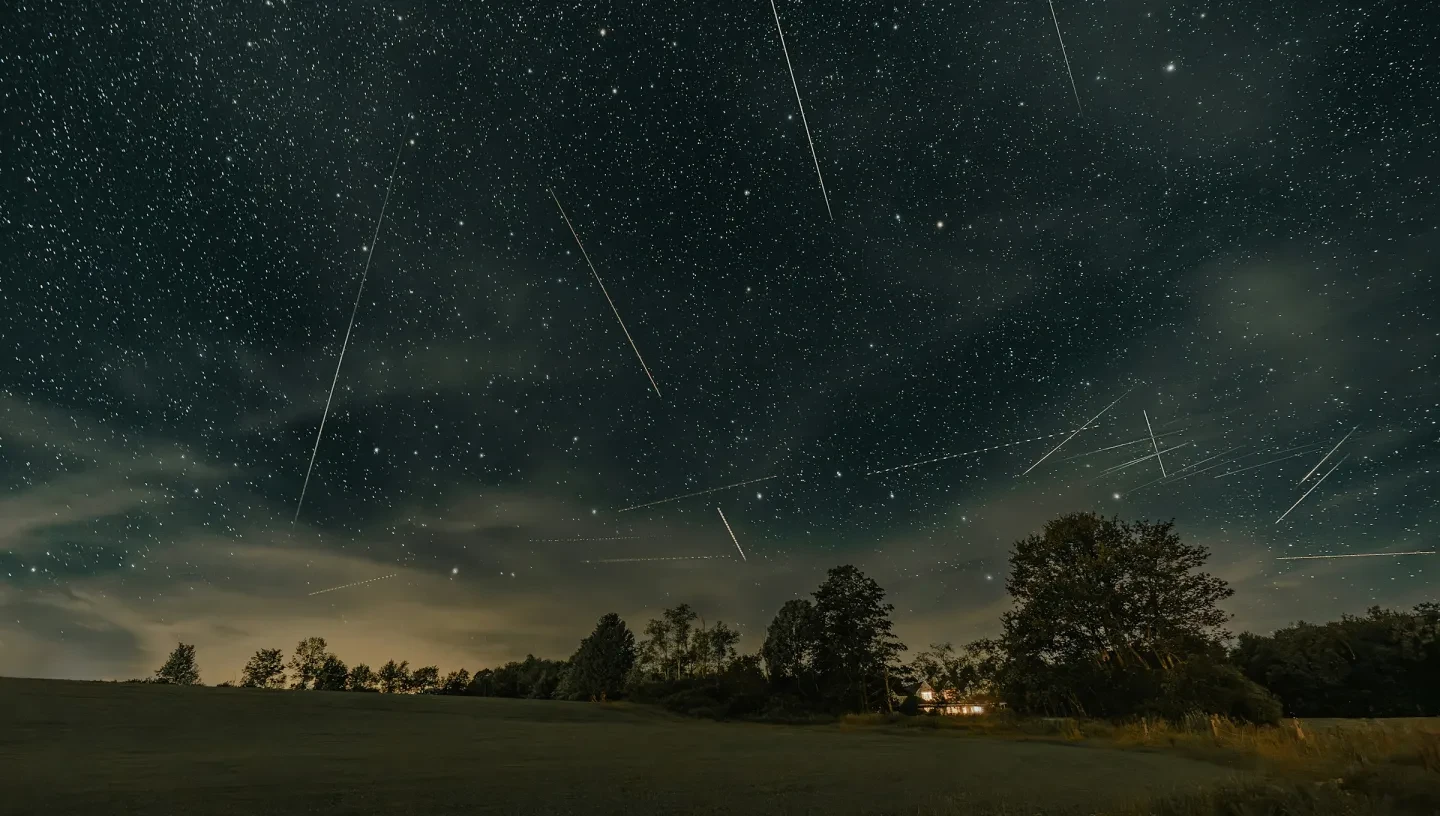
Find out what to see in the August night sky, including the highly anticipated Perseid meteor shower, a phenomenal globular cluster and more!
Top 3 things to see in the night sky in August 2024:
- 12/13 August – the Perseid meteor shower peaks!
- 14 August – Mars overtakes Jupiter
- Throughout the month – the Hercules Cluster, the first place in space we sent a message to!
(Details given are for London and may vary for other parts of the UK.)
Look Up! Podcast
Subscribe and listen to the Royal Observatory Greenwich's podcast Look Up! Our astronomers Imo and Catherine talk through some of this month’s must-see cosmic objects and discuss two space news stories: the first launch of the Ariane 6 and the release of 4 crew from their year of isolation in the CHAPEA Mars simulation.
The Perseid meteor shower peaks
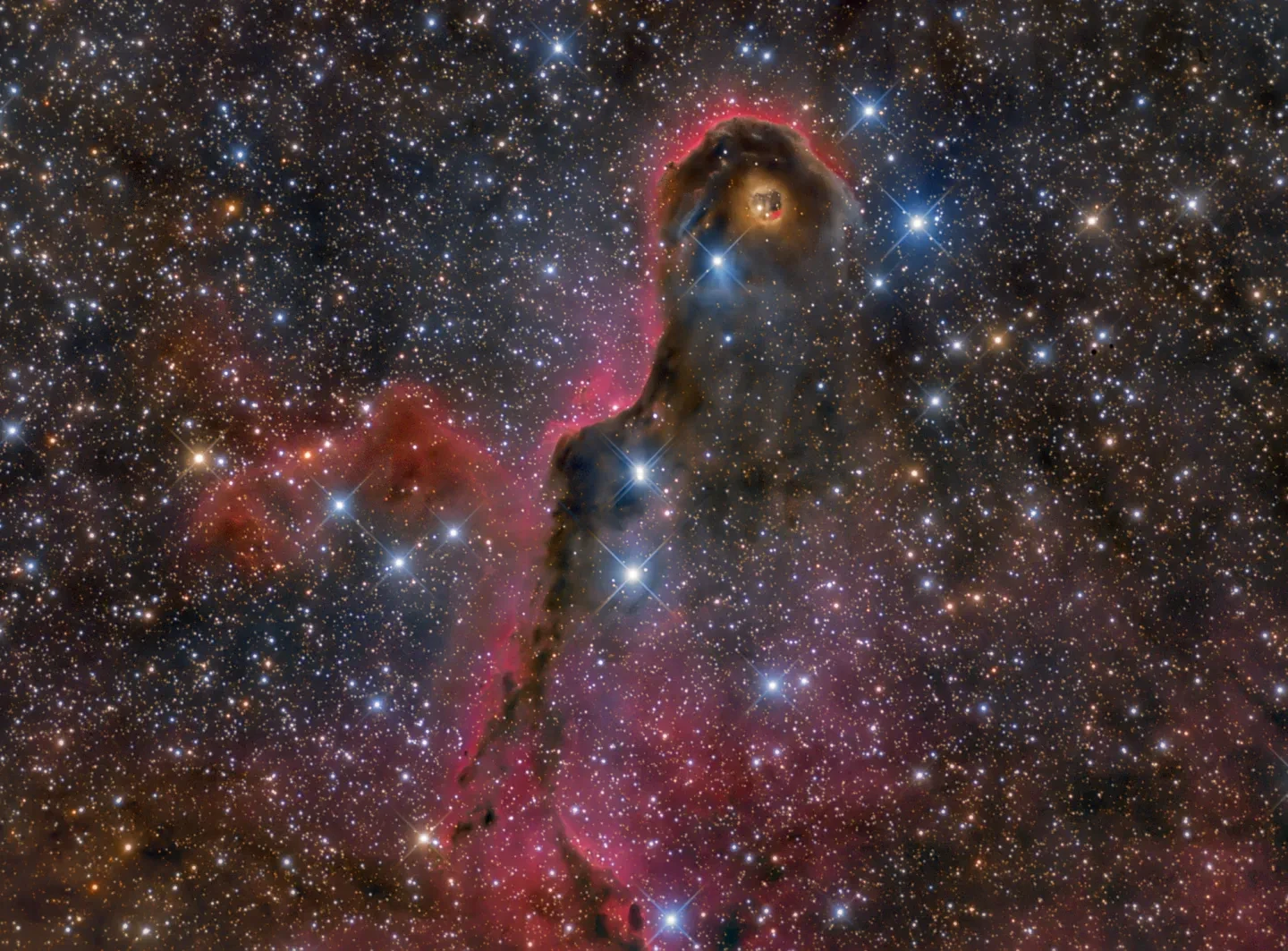
It's finally here!
This month will see the peak of one of the best meteor showers of the year. The Perseid meteor shower will reach its maximum on 12-13 August, giving us the opportunity to see up to 100 meteors per hour.
Although I talked about it in last month’s blog, it's still important to reiterate that despite it seeming as though the Perseids have arrived, it is actually us who have made our annual return to them. Rather than them crashing into us, it is us crashing into them as the Earth spins across the field of leftover debris of Comet 109P/Swift-Tuttle.
It is one of the most highly anticipated meteor showers of the year due to the high rate of bright meteors with persisting trains as well as the possibility of fireballs- larger particles that explode with exceptional brightness. It’s also nice that they occur during the warmth of summer in the Northern Hemisphere.
To view this spectacular show, start by looking around the constellation of - surprise, surprise - Perseus! You can find him on the Eastern horizon hanging above Taurus and below Cassiopeia. Luckily, the Moon is staying out of the way, waiting below the horizon during the peak.
Find a place with a clear unobstructed view, because although the meteors will appear to radiate from Perseus, you will be able to see these bright trailing streaks all across the sky. They'll be visible as soon as it gets dark, but the best time to see the Perseids is after midnight. And as always with meteor showers, get comfortable and settle in for the show.
Mars and Jupiter race
At the start of the month, Mars starts in pole position with Jupiter far behind. Over the course of two weeks, Jupiter will appear to approach closer to Mars in the sky, until the tables finally turn on 14th August when Jupiter overtakes entirely.
Look out for them rising in the northeastern sky just before 1am on 14 August. You’ll see the two planets close together in the constellation of Taurus. You'll know which is which because Jupiter will be almost 5x brighter than Mars, with Mars on the right and Jupiter below to its left. If you take a look at the same time and place on 15 August, they’ll have swapped over! Make the most of the two planets being so close, because continuing into August, the gap between them will grow as Jupiter storms ahead.
This is, of course, only happening due to our perspective. From our place in the Solar System, Earth looks out from the Sun to Mars and then Jupiter. The further a planet is from the Sun, the longer it takes to complete an orbit, with Mars taking just under two Earth years, and Jupiter taking 12. If you imagine the Solar System from above, Earth and Mars are careening around the Sun to catch up with steady Jupiter, giving the illusion from Earth that Jupiter is overtaking.
Hunt for Hercules
Hercules is well placed for viewing this time of year. There are a few good ways to find your way there thanks to its helpful place amongst some pretty distinct objects.
For a lot of people, (me included) the Plough is the first thing that shines out from the rest. When you’ve spotted the bright saucepan shape, follow the straight line of the handle to Hercules. You might find Corona Borealis to steer you on your way over - a constellation that looks like a curved string of bright pearls. Hercules is right next door!
If instead you follow the curve of the handle, you can bring yourself to the bright star Arcturus. Hercules can be found in between Arcturus and Vega, the fifth brightest star in the night sky. If you’re sick of me using the Arc to Arcturus every month, you can use the summer triangle instead. Draw a line from Deneb to Vega (contained within Cygnus and Lyra respectively) and continue straight on to Hercules.
Hercules looks more like a five-legged spider than the ancient Roman hero he’s supposed to represent. Some even see a headless man with a walking stick.
Message to the Stars in M13
Now we’ve circled in on Hercules, you’ll be able to see its bright keystone asterism. About a third of the way down the edge farthest from Vega, you can find the astounding Great Hercules Cluster, otherwise known as M13. With an apparent magnitude of 5.8, you can just about make it out with the naked eye, but a pair of binoculars or a telescope is definitely the way to go for this one.
M13 is a globular cluster containing at least 300,000 stars. It was discovered by Edmond Halley in 1714, describing it as "but a little patch".
260 years later, this little patch was the target of the first ever message from humanity, when in 1974 the Arecibo Message was broadcast towards the hundreds of thousands of stars in the Great Hercules Cluster.
As exciting as it sounds, the purpose of this message wasn’t really for any aliens in M13, who, if they exist at all, won’t receive it for another 25,000 years. Rather it was to celebrate the reopening of the Arecibo Radio telescope and demonstrate its capability to send such a message. It was also an opportunity to work out how we’d write a message to an extraterrestrial civilisation with no common language and to think about what information we should be sending out there.
The message was constructed so the hypothetical aliens could decode it using maths, where an understanding of maths is a prerequisite for a civilisation capable of receiving the message in the first place. Once decoded, the message would reveal some choice information about humanity, including the height of the average American man, the nine planets in the Solar System (now eight), and the population of Earth that has since almost doubled.
What message would you transmit to the very hypothetical aliens in M13?
Southern Hemisphere - Omega Centuri
If you live in the Southern Hemisphere and like the sound of viewing a globular cluster, you have the Milky Way’s biggest and brightest globular cluster visible from Earth on your side of the planet - Omega Centuri.
You can find Omega Centuri within the constellation Centurus sinking towards the southwestern horizon in the evening. It is visible to the naked eye, but binoculars or a telescope are required to make out more than a fuzzy blob. The cluster has a diameter of 150 light years and contains around 10 million stars so tightly packed the average distance between them is over 40 times closer than the distance between the Sun and its neighbour, Proxima Centuri (also found within Centaurus)! The variation in ages of these stars suggest the cluster is the nucleus of a dwarf galaxy that was captured long ago into the Milky Way.
Several studies into the behaviour of stars in the cluster have pointed to the existence of an intermediate-mass black hole at its centre. This includes a study published (at time of writing) extremely recently on 10th July, suggesting an intermediate-mass black hole at least 8,200 times the mass of the Sun is behind the fast movement of stars at the cluster’s centre.
This is pretty cool because black holes in this mass range are much more elusive than stellar mass or supermassive black holes and are sometimes considered the 'missing link' in black hole evolution.
The Moon's phases in August 2024
New Moon: 4 August (12:13)
First Quarter: 12th August (16:19)
Full Moon: 19 August (19:26)
This will be a Blue Moon- the third full moon in a season of four.
Last Quarter: 26 August (10:26)
Stargazing Tips
- When looking at faint objects such as stars, nebulae, the Milky Way and other galaxies it is important to allow your eyes to adapt to the dark so that you can achieve better night vision.
- Allow 15 minutes for your eyes to become sensitive in the dark and remember not to look at your mobile phone or any other bright device when stargazing.
- If you're using a star app on your phone, switch on the red night vision mode.
You may also be interested in
Header Image by Clay Banks on Unsplash
